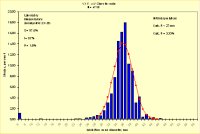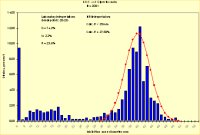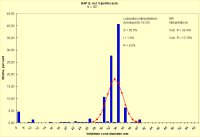|
NRI
Normalized Resistance Interpretation
For comparative investigations of antimicrobial susceptibility
Let us ask ourselves: Whick part of an inhibition zone diameter
or MIC distribution (species-wise) for a given antimicrobial is
unaffected by the development of resistance?
Answer: The high-zone (or the low MIC) side of the most
susceptible population of strains, representing the wild-type population.
When resistance occurs in an isolate of that species, the position
of that isolate in the distribution changes to lower zone sizes
or higher MIC values.
So, if we can use the upper zone size slope (or low MIC side) of
the distribution for a reconstruction of the whole wild-type distribution,
then we have obtained an internal calibrator which will enable us
to compare results from anywhere, from any laboratory in the world.
This can be done using the
Normalized Resistance Interpretation method, NRI.
A
summary of the procedure is presented in IJAA.
A detailed
analysis of parameter setting for the NRI calculations was performed
by Joneberg et al.
MIC distributions with regular double dilution steps provided too
few points for solving the regression, but
Etest results with intermediate values included, were precise
enough for NRI calculations to work. This was shown in studies of
tigecycline susceptibility.
US Patent No. 7,465,559, European patent No 1383913.
Return HOME 
|


